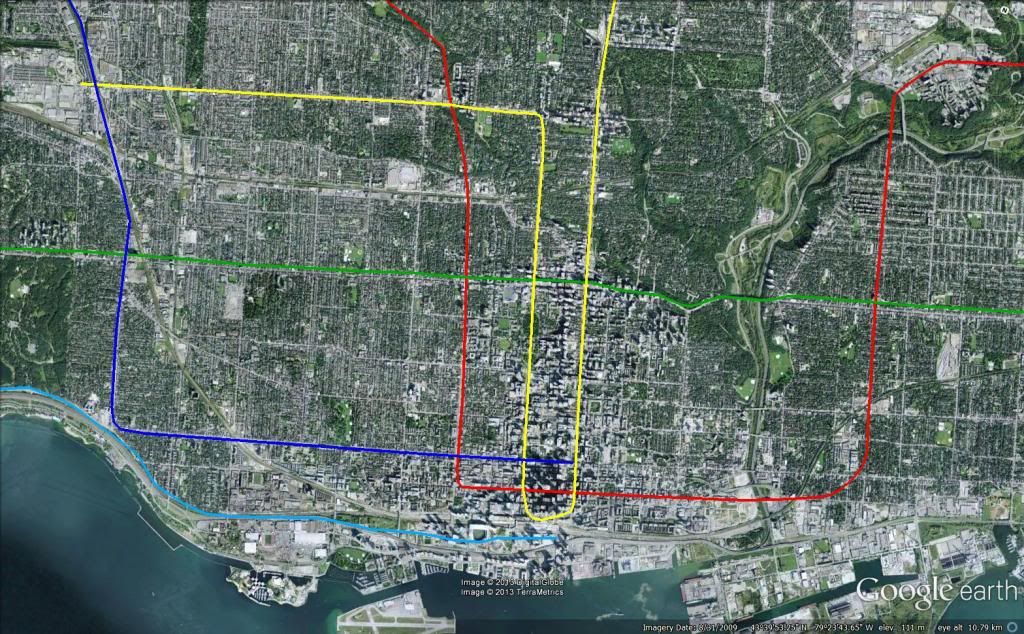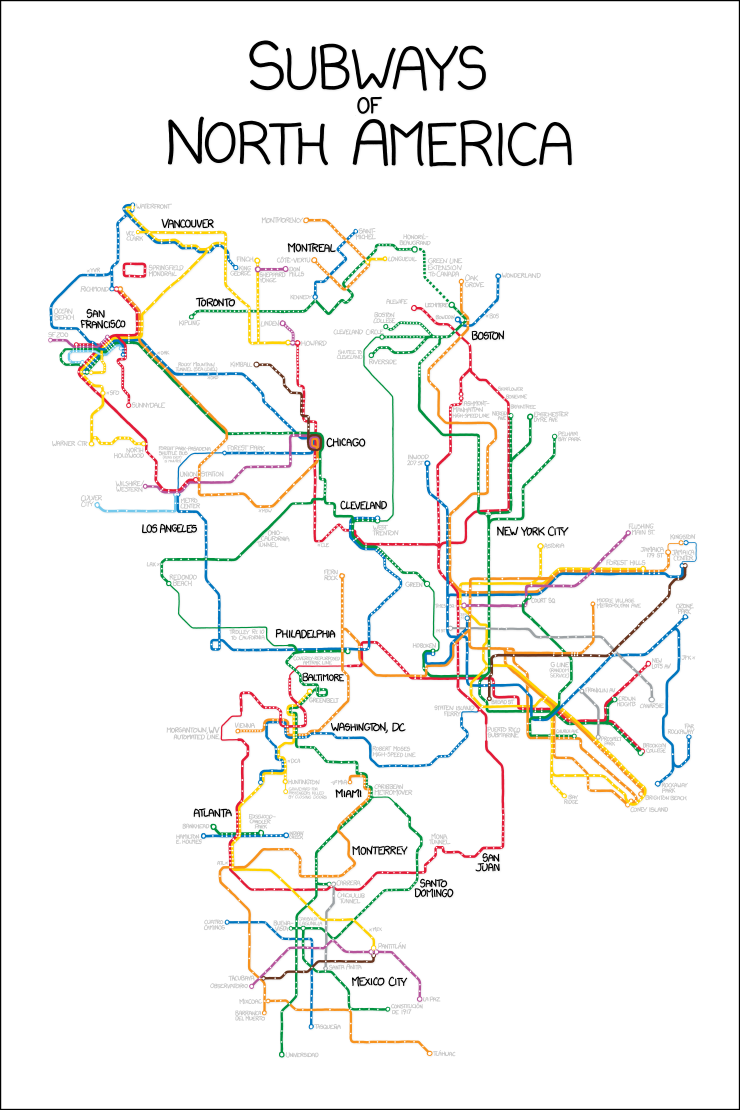innsertnamehere
Superstar
I don't really see the demand for LRT lines on both Finch and Sheppard.
downtown specific:

There's a subway line less than 400m away. Install signal priority on Spadina, scrap some of the stops and call it a day. We'll now have rapid transit on Spadina for not even a few million dollars.
If you're concerned about the "Champs-Elysee-style boulevard", tear down the Gardiner and replace it with that. It's a far better location as well and is actually realistic from an urban planning point of view.




It's nice, but you will need more than 2 tracks for GO. CN needs 1 track, with go needing 8 at union, and dropping 2 at each point the line spurs off. (Barrie, Milton, etc)
I understand the need and like the idea to convert the UP express corridor to subway, but I don't see the need to construct a completely new mainline tunnel to Terminal 1. I would think that a transfer at Woodbine would be sufficient.

I have been working on my own diagram for the Kitchener line based on a chart I had previously posted
RED: DRL Subway (EMU)
GREEN: GO (12 Car Diesel or Electric in peak direction, EMU/DMU regional rail)
YELLOW: VIA (Whatever the heck they want to use)
BLUE: Waterloo-Wellington Interurban (initially DMU, upgraded to EMU when electrified)
Bolded stations are potential future high speed rail stations.
I've shifted the function of Etobicoke North GO station to Islington to give the station better access to the 401 and to act as a better Park and Ride station. (Google Map)
I have been working on my own diagram for the Kitchener line based on a chart I had previously posted
RED: DRL Subway (EMU)
GREEN: GO (12 Car Diesel or Electric in peak direction, EMU/DMU regional rail)
YELLOW: VIA (Whatever the heck they want to use)
BLUE: Waterloo-Wellington Interurban (initially DMU, upgraded to EMU when electrified)
Bolded stations are potential future high speed rail stations.
I've shifted the function of Etobicoke North GO station to Islington to give the station better access to the 401 and to act as a better Park and Ride station. (Google Map)
Not too familiar with the corridor west of Georgetown....how many tracks does your plan need west of GTown? How many are there now?
I found this on the net





